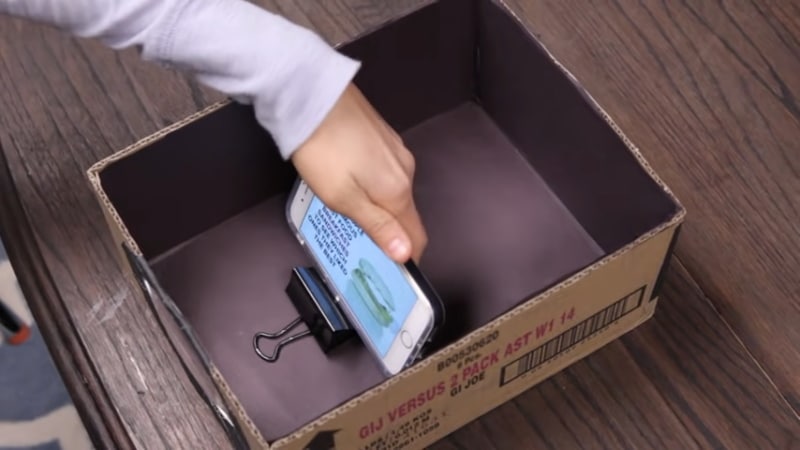Thanks to modern projectors, we have a ton of ways to watch content. You can connect myriad devices to your projector for a large audience viewing. The multiple connection options enhance the projector’s versatility. This article provides a clear guide on how to connect a laptop to a projector. If you have connected a TV to a projector, the process is pretty much the same. Depending on the ports available on your laptop, the process is very straightforward.
If your laptop has an HDMI port, you may not need an adapter because most projectors come with an HDMI port. Also, if your laptop has a VGA port and your projector has a VGA input, you will not need an adapter. You can also make a wireless connection via Bluetooth, screen sharing, and projector pairing mode. Read on to find out the types of ports your laptop is likely to have so that you know the kind of connection you need to make. When selecting a laptop to use with a projector, be sure to reference our guide to the best laptop for music production for recommendations.
Wired connections aren’t always practical with regard to projector connections. This is because the projector may be permanently hung on the ceiling.
The first thing to do is power on your laptop and projector, then put your projector in pairing mode. Your projector has a button for turning on Bluetooth. You can also use the remote control it came with to turn the Bluetooth on and make it discoverable. Refer to your user manual for more information.
Once you have made your projector discoverable, go to the action center on your laptop’s taskbar. Click the Bluetooth Trusted Source NIHF Inductee Jaap C. Haartsen Invented Bluetooth Wireless Technology National Inventors Hall of Fame Inductee Jaap C. Haartsen invented Bluetooth Wireless Technology, enabling connections between a seemingly endless array of devices. www.invent.org icon to turn it on. If your laptop doesn’t support Bluetooth, you can use a USB Bluetooth adapter. Connect it to the laptop and follow the instructions on the screen to set it up.
Click connect, which should be right below the Bluetooth icon. The laptop will begin to scan for available Bluetooth devices. Find your projector from all the options available and tap pair.
When you press the ‘Windows’ and ‘P’ keys together, you will get a list of screen sharing options on your laptop, including;
PC screen only: this option will turn off your projection screen such that your laptop screen won’t be shared.
Duplicate: this allows you to see the exact image on your projector as it is on your laptop screen.
Extend: This option offers you more space and allows you to share anything you want by dragging content from your laptop’s screen to the projection area.
Second screen: this allows you share everything from your laptop’s screen on the projector, but you will not be able to see anything from your laptop
If you are going the wired connection route, you can connect your laptop to the project with either of these cables;
This is the simplest method. Check if your laptop has a full-size HDMI Trusted Source HDMI Resources for Testing Prior to mass producing or distributing any Licensed Product or component that claims compliance with the HDMI® Specification (or allowing someone else to do such activities), each Adopter must test a representative sample for HDMI® compliance. www.hdmi.org port and your projector has the same kind. Get an HDMI cable according to how far your projector is mounted. Plug in your laptop into a power source, then plug the cable into the HDMI ports of both the laptop and the projector. Power on both devices to see if you are successfully connected.
HDMI cables will come in handy for the best gaming projectors to receive the HQ image and quicker response.
This is similar to the HDMI connection. All you need is a VGA cable long enough to connect the two devices. Turn on your laptop and plug in the VGA cable into the VGA port. Plug the other end into the projector then switch on the projector. Remove the projector cap and open the projector lens. If your projector immediately projects your laptop’s content once turned on you can skip this step. Your projector should be ready to use at this point.
If both your laptop and projector have DVI ports, you can use a standard DVI cable to connect them. You can also get an adapter and use a DVI to HDMI cable to connect your laptop to your projector if it has no DVI port.
Many devices, including Pico projectors, feature micro-USB due to more compact design and can be easily adapted to USB-C. If your laptop uses USB-C to output video and your projector supports USB-C video input, you can connect the two directly with a USB-C cable. If the projector doesn’t support USB-C video input, you can buy a dock that features a HDMI port or a USB-C to HDMI adapter for connecting the 2 devices.
According to most reviews, the Qidoou USB-C to HDMI adapter is the best that money can get as it is a high-quality, fast converting and charging adapter. It also comes in a compact design that is easy to carry around.
The process of connecting a laptop to a projector may vary according to the manufacturer. Connecting a Mac to a projector is different from connecting a Windows PC to a projector. For instance, if you are doing an HDMI connection for a Mac, you have to get an Apple MFi certified HDMI adapter. The Esbeecables HDMI cables remains the most acclaimed model for most Mac users because it has an advanced high-performance chip that ensures high-speed transmission.
Here is an example of two popular laptop manufacturers and how the process differs for them:
Lenovo has different types of models, and not all of them have similar features, but at least all of the models are equipped with one or more external display connectors. All Lenovo think pads feature VGA ports. Therefore, the VGA cable method is the top option for connecting Lenovo laptops to a projector.
Dell features many rather inexpensive devices and is a popular manufacturer when the question comes to price. Like with other windows PCs, the first thing to do when connecting a Dell laptop to a projector is check the type of external display connectors it has. If it has HDMI, VGA or DVI and your projector supports either, just do a direct cable connection. To get your Dell computer’s display settings, hold down the ‘Fn’ key on the left side of your keyboard, then press ‘F8’ to cycle through them.
Once you learn how to connect a laptop to a projector using different methods, you would never have trouble sharing your screen anywhere. You can do a wired or wireless connection depending on the position of the projector. Some places you will go to make a presentation will have their projector hang up on the ceiling and a wireless connection would be the easier option.
For wired connections, the first thing to do is to check the kind of external display connectors featured on your laptop. Most laptops come with HDMI, VGA or DVI ports. HDMI is the easiest way to connect your laptop to a projector. If your projector doesn’t have the same HDMI port as the one on your laptop, you can always get a HDMI adapter to make the connection possible.





